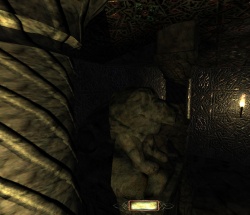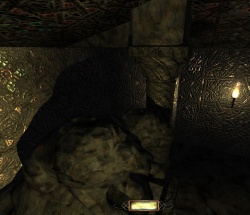Noselfshadows: Difference between revisions
From The DarkMod Wiki
Jump to navigationJump to search
New page: The best way to explain the noselfshadows keyword is an example: 250px 250px The lion in the screenshots has '''noselfshadow''' def... |
No edit summary |
||
| Line 5: | Line 5: | ||
The lion in the screenshots has '''noselfshadow''' defined in his material. This means, that | The lion in the screenshots has '''noselfshadow''' defined in his material. This means, that | ||
# other surfaces '''without''' noselfshadows can cast shadows on the lion (e.g. the pillar can cast on lion). | # other surfaces '''without''' noselfshadows can cast shadows on the lion (e.g. the pillar can cast on lion). | ||
# the lion cannot cast shadows on other surfaces '''with''' noselfshadows. This trivially includes the lion itself. | # the lion cannot cast shadows on other surfaces '''with''' noselfshadows. This trivially includes the lion itself and the other lion in the right screen. | ||
# the lion can cast shadows on other materials '''without''' noselfshadows (e.g. the pillar in the background). | # the lion can cast shadows on other materials '''without''' noselfshadows (e.g. the pillar in the background). | ||
Revision as of 17:42, 4 November 2007
The best way to explain the noselfshadows keyword is an example:
The lion in the screenshots has noselfshadow defined in his material. This means, that
- other surfaces without noselfshadows can cast shadows on the lion (e.g. the pillar can cast on lion).
- the lion cannot cast shadows on other surfaces with noselfshadows. This trivially includes the lion itself and the other lion in the right screen.
- the lion can cast shadows on other materials without noselfshadows (e.g. the pillar in the background).
In other words, noselfshadow inhibits casting shadows if
originMaterial.noSelfShadows == true && targetMaterial.noSelfShadows == true

